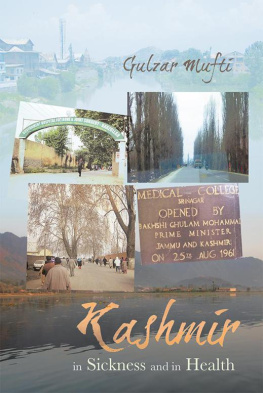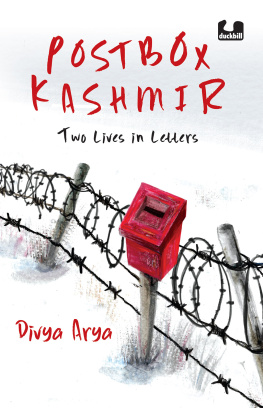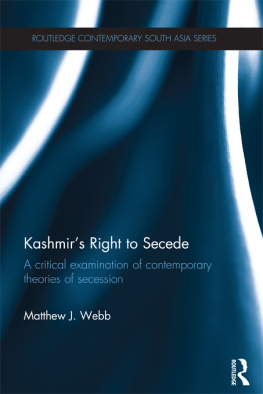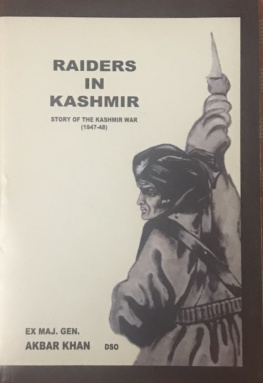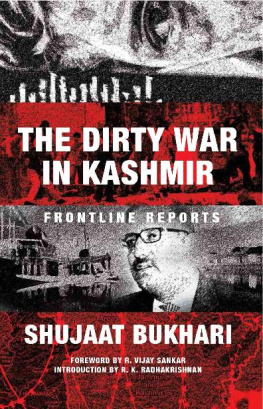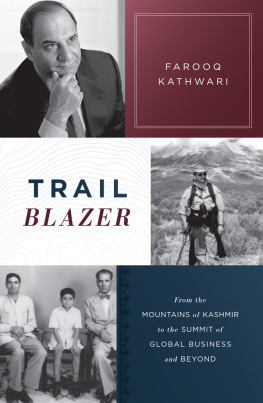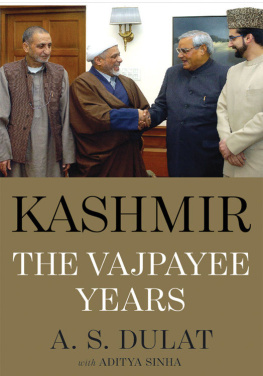Table of Contents
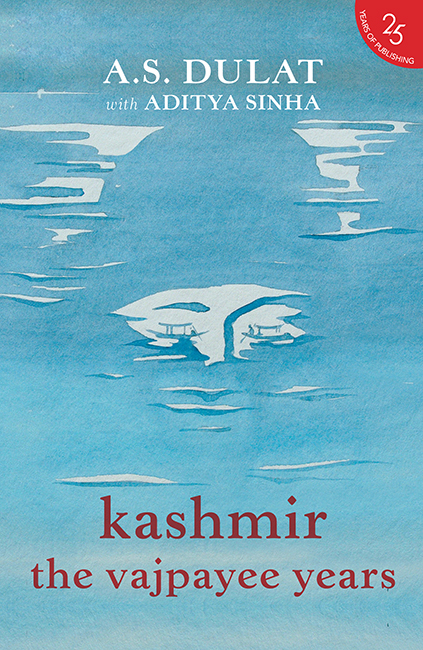
KASHMIR
The Vajpayee Years
A.S. Dulat
with Aditya Sinha
Foreword by Farooq Abdullah

For
My mother Raj, and my father Shamsher,
an avid reader who would have enjoyed
my Kashmir story
This above all: to thine own self be true,
And it must follow, as night the day,
Thou canst not then be false to any man.
Shakespeare (Hamlet)
CONTENTS
Kashmir: The Vajpayee Years written by A.S. Dulat with Aditya Sinha has been an eye-opener on many counts. There have been many books on Kashmir, its history, problems and politics, and events there have received extensive coverage over the past decades. However with the multiplicity of opinions available it is not always easy to make out the truth about what is happening there. Dulats book reveals new facets not available in any other book, and is notable both for its account of events as for its portrayal of the players. One aspect, for instance, that stood out for me is the negotiations that were held by the Government of India with Abdul Majid Dar and others. Dar, it may be mentioned, was leader of the dreaded Hizbul Mujahideen and the most important Kashmiri terrorist in Pakistan, but the extraordinary tale that Dulat tells is largely a tragic love story.
Kashmir: The Vajpayee Years has been reviewed and referred to by almost every newspaper and featured on all the TV channels. It sold like hot cakes in Kashmir and, not surprisingly, the separatists were the first to make a beeline for it. The book has also been well received in Pakistan. Dulat has touched upon many points of Kashmir politics in which he has looked perceptively at the role of militants, mainstream politicians and also of the Hurriyat leaders. It is a riveting account of contemporary Kashmir.
Dulat has been closely following Kashmir and knows it intimately. Much of what he has written is in the public domain. Yet the book came as a revelation. Dulat has many more stories to tell and I hope he will write a sequel to Kashmir: The Vajpayee Years, which is already overdue. It will be a bigger bestseller than the first.
I pray and hope that whoever reads this book will know the way he worked for the betterment of relations between two nuclear nations who are also neighbours, India and Pakistan, and bringing about a rapprochement on the issue of Jammu and Kashmir.
Lastly, for its perspective, depth and understanding of issues at play in J&K, I would recommend this book highly to anyone with an interest in the state.
Dr Farooq Abdullah Former
Chief Minister of Jammu and Kashmir
August 2016
Kashmir: The Vajpayee Years was published in June 2015. It was reprinted within two weeks, and again a couple of weeks later. It was a roller-coaster ride which took me on a Bharat darshan, and beyond to London, where the book attracted keen attention and large crowds. The highlights from those days were a stimulating discussion at the Bangalore International Centre with Ramachandra Guha, and a chance encounter in Pune with an exceptional human being, Sanjay Nahar, whom I salute for the empathy he has for Kashmir. The book topped bestsellers lists, and according to Mithilesh of Bahrisons in Khan Market, New Delhi, Kashmir: The Vajpayee Years sold more copies than any other book in 2015.
After two decades of negotiations in Kashmir with leaders of all hues and political inclinations, it was a pleasant surprise for me to find the books message getting across in this fashion. It all started as a modest effort. As we wrote it, the scope expanded, the main players became flesh-and-blood characters, stories from the pastsome tragic, some with a comic twiststarted to resurface in my mind. Some, such as the killing of the young debonair, Praneet Sahni, which had nothing to do with politics, added to the pathos.
Kashmir, however, is an ongoing story. Much water has flowed down the Jhelum in the past fifteen months. The tragedies that we thought we had left behind are again with us. The winter of 1989-90, eerie as it was, has found echoes in the summer of 2016 as Kashmir remained under curfew for more than fifty days.
Vajpayee is sorely missed in the ongoing crisis in Kashmir. As Srinagar and Delhi struggle to restore peace, Ataljis words of wisdomInsaniyat, jamhooriyat, Kashmiriyatstill reverberate in the Valley. As does his determination to resolve Kashmir by unending dialogue, if necessary. As he told Kashmiris in April 2003, he was determined to pursue peace with Pakistan despite being let down twice. And so he went to the SAARC Summit in Islamabad in 2004, something for Narendra Modi to ponder as the next summit looms on the horizon in November. Vajpayee was something else, as Kashmiris sayand now crave for.
I have been told by friends and readers that in trying to understand what is happening in Kashmir now, Kashmir: The Vajpayee Years provides a valuable window to the players, events and forces at work in the state. Interacting with Aditya Sinha, of course, was essential to the whole process of how the book turned out. I sincerely hope that the message of Kashmir: The Vajpayee Yearsof the need for an uninterrupted and uninterruptible dialogue with and within the statewill help those who pick up a copy of the book to better understand J&K, going beyond the headlines, prime-time debates on TV and newspaper reports.
A.S. Dulat
August 2016
Aadaab. Baat Niklegi Toh Phir Door Talak jayegi
Kafeel Azzer
One day during my tenure in the Prime Ministers Office (PMO)where I unexpectedly landed after my time heading the Research & Analysis Wing (R&AW) was upI was as usual discussing Kashmir with Brajesh mishra, the principal secretary to Prime Minister Atal Bihari Vajpayee (who also served as Indias first national security advisor). Do you know, Dulat, the only thing straight in Kashmir are the poplars? he said.
Kashmir has been a part of my life since I first visited in 1987, in preparation for my posting there as deputy director in the Intelligence Bureau. The Kashmir Valley is beautiful all year round and its difficult to say which season is most beautiful. Spring, however, is special, with fruit blossoms, tulips, daffodils and narcissi. So even after retirement, come the Darbar move, Paran, my wife, and I still make our annual constitutional visit to Srinagar to savour the crispness of the air and a round or two of golf but most of all to catch up with old friends.
Paran thinks Im nuts, interacting with Kashmiris on an almost daily basis even ten years after I left the government. She herself is acquainted with many Kashmiri voices, literally: when I was deeply involved with Kashmir in the 1990s, our day in New Delhi normally began with a telephone call, which Paran would receive with an Aadaab. This was before mobile phones. In due course she recognised regular callers to whom she assigned nicknames: Tweedledee and Tweedledum, Beehive, Sidekick, Gingersnaps, Drone, Sleepyhead, Aap ka Bhai, etc. God knows how she came up with these names but we would laugh our guts out; it was the lighter side of what was a stressful period. Parans favourite was Gingersnaps, who was politeness personified.
In 2012 I was in Srinagar with Paran and six of her friends, and a regular visitor to our hut at the Centaur Hotel was Firdous Syed, a former militant commander-in-chief who went by the name of Babar Badr. The ladies were excited at meeting a militant and one of them, Sonia Pandhi, sacrificed a trip to Gulmarg to spend the morning listening to Firdouss story. How could such a decent person ever have been a terrorist? she asked me afterwards. I explained that Firdous was not a terrorist in the way she imagined one to be, but one of many disillusioned Kashmiris who took to the gun. More significantly, Firdous understood the futility of violence as early as 1994 when he wrote of his shattered dream, quoting Faiz Ahmed Faiz: Shishon ka koi messiah nahin, kyon aas lagaye baithe ho.


